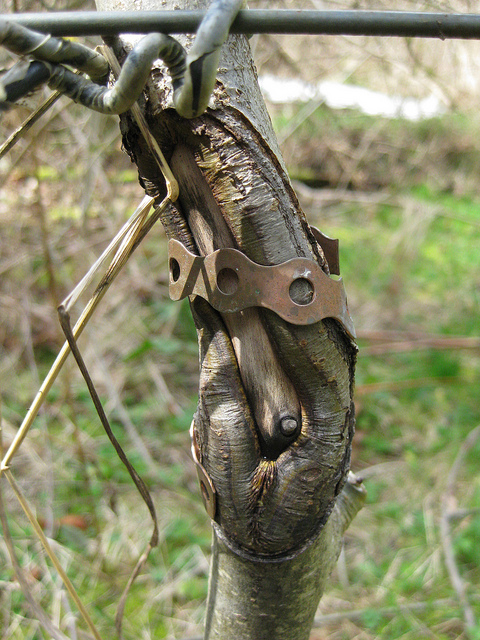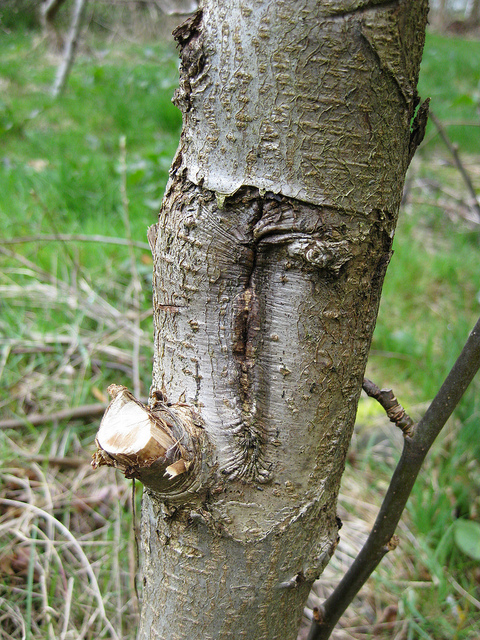A penny for your thoughts?
From the earliest times we have valued the stuff and in many ways it has helped shape what we call ‘civilization.’ Two of the great ages of man – the Chalcolithic and the Bronze Age – are named after it and its subsequently discovered alloy, and it is so archetypal that the chemical symbol is the same one we use for ‘female.’ Yes copper is pretty amazing stuff and has a myriad uses. Because of its handy ability to conduct electricity, it is indispensable to modern life and it is almost unimaginable to think of how we would do without it. Aside from its technological utility, copper has some interesting biological properties. You might have heard how copper is a key component in the blood of Vulcans and prehistoric-looking horseshoe crabs, but more importantly it is lately being re-appreciated for its remarkable antibiotic qualities. Those brass doorknobs on old buildings weren’t just installed for their warm, burnished glow but because the copper in the brass actively kills microbial growth. With the increasing incidence of antibiotic resistance among pathogens, diseases we had been confident we could control are re-emerging with a vengeance threatening to reverse a century of progress in the control of infection. For some of these superbugs there are no new antibiotics in the pipeline and the potential for untreatable epidemics has now become worrisome. The evolution of drug resistant organisms is sped up substantially in hospitals because they provide ideal environments for many iterations of germs and antibiotics to interact. Through the brute force mechanism of Darwinian selection, a few bugs survive every exposure and pass their genes on to the next generation. Repeated enough times, this creates pathogens that are pretty much un-killable with conventional antibiotics, which has already happened in the case of MRSA and Clostridium difficile.
Enter copper. The New Scientist reported on trials at the University of Southampton, UK that demonstrated virulent MRSA bacteria are quickly killed simply by placing them on a copper plate. If it turns out that copper actually kills the bacteria before they get a chance to reproduce, it could precipitate a major re-think of infection control in health care facilities. Trials are currently underway. If they work out, it would mean that medical instruments and hospital surfaces could be made with enough copper in them to garner this effect, stopping the spread of superbugs before it even starts.
Though the copper industry will likely be quick to capitalize on this, there is really nothing new about the phenomenon and the curative effects of copper were well known even in ancient times.
As well as being bactericidal, copper is active on many other pathogens, including fungi. Where I live, in coastal British Columbia, fungal plant diseases like the late blight and anthracnose canker present a significant challenge to growers of fruits and vegetables. Whole crops of potatoes and tomatoes can be wiped out, if the weather gets damp at the end of summer and the blight sets in. In the case of tomatoes, there is a local folk remedy I have tried which involves sticking a short length of copper wire through the base of each plant, just above the ground. A variation of the technique is to use a longer bit of wire, inserted the same way but bent down to touch the soil. I’ve tried both ways and have found them to slow the onset of disease significantly but not to eliminate it, especially if the weather socks in for a long time. Nevertheless, I think it’s worth doing. Sometimes a few extra days of ripening can make the difference between a usable harvest and a waste of effort.
Anthracnose canker afflicts fruit trees badly here in coastal British Columbia, particularly apples, and I have tried various sprays with little or no effect. A few years ago a number of my trees got so badly infected I considered tearing them out and burning them to limit the disease’s spread. In a last ditch effort, I wrapped copper wire around the lesions to see if it might have the same beneficial effect to what it did with tomatoes. It took a while, but after a few months, the cankers I treated stopped spreading and the bark at the edges started growing back. My feeling after experimenting with this for a number of years is that the copper wire (and strapping) I am wrapping around the wounds doesn’t actually cure what is after all a systemic fungal infection, but rather limits the surface manifestation of the disease, preventing it from girdling the tree and allowing the cambium to continue its life-giving function. In any case, I’ve managed to save (or perhaps more accurately- extended the life of) many apple trees with this simple technique and it has paid off by giving me a lot of fruit. I realize this isn’t standard arboricultural practice, but if anyone out there in slobber space is doing similar experiments, please let me know via the comment feature of this blog. Sometimes it takes us plant geeks to move the knowledge forward!





